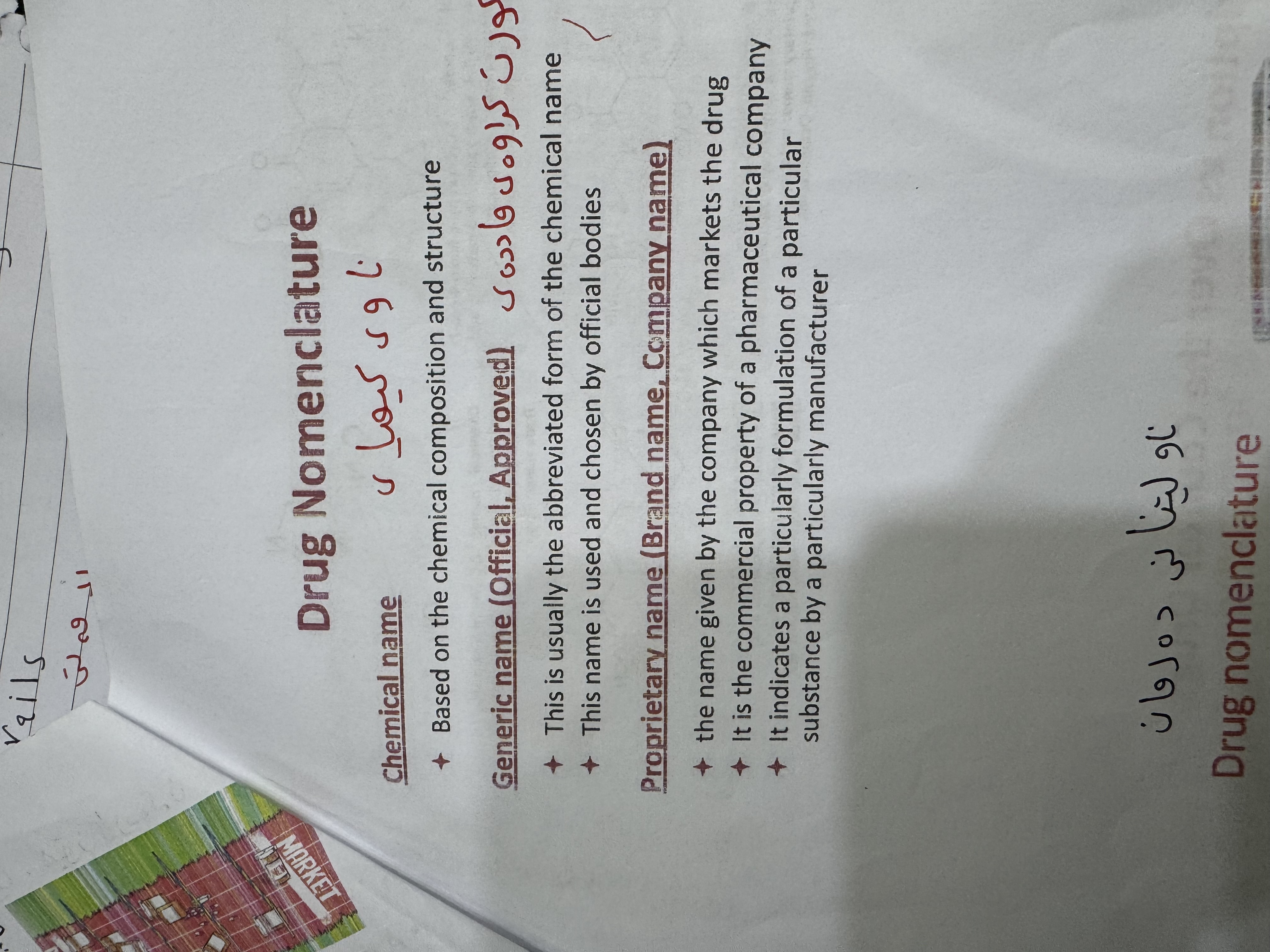Explain drug nomenclature.

Understand the Problem
The image shows information about drug nomenclature, specifically the different types of names a drug can have, including chemical name, generic name, and proprietary name. It provides brief definitions and characteristics of each type of name.
Answer
Drug nomenclature is a systematic way of naming drugs, involving chemical, generic, and brand names.
Drug nomenclature is the systematic naming of drugs. A drug typically has a chemical name based on its structure, a generic name that is an abbreviated form of the chemical name chosen by official bodies, and a proprietary or brand name given by the marketing company.
Answer for screen readers
Drug nomenclature is the systematic naming of drugs. A drug typically has a chemical name based on its structure, a generic name that is an abbreviated form of the chemical name chosen by official bodies, and a proprietary or brand name given by the marketing company.
More Information
Drug nomenclature ensures that each medication has a unique and recognizable name, aiding in its identification and use.
Tips
A common mistake is to confuse generic and proprietary names. Remember that generic names are standardized and non-exclusive, while proprietary names are specific to a company's brand.
Sources
- Drug nomenclature - Wikipedia - en.wikipedia.org
- How Do Drugs Get Named? - GoodRx - goodrx.com
- [PDF] An Introduction to Drug Nomenclature - Acta Scientific - actascientific.com
AI-generated content may contain errors. Please verify critical information